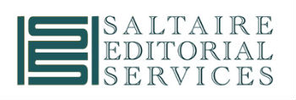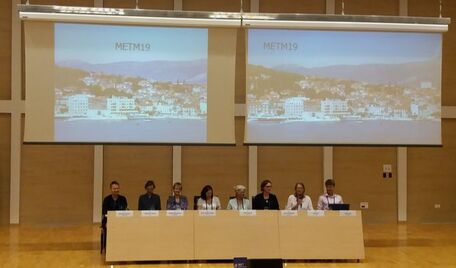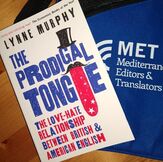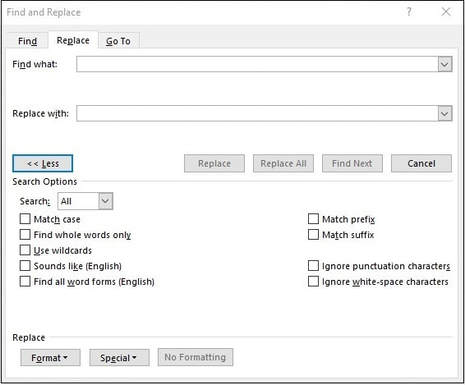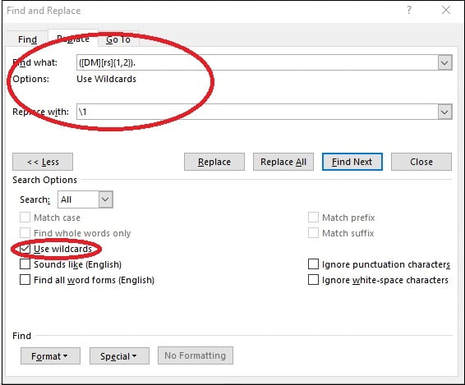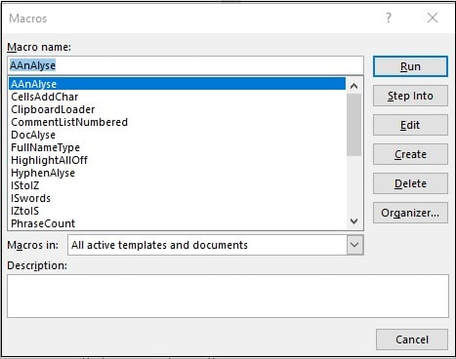|
Three years ago I was inspired to write my very first blog post after a trip to Tarragona in Spain. I’d attended the annual gathering of the Mediterranean Editors and Translators (MET) – the so-called MET Meeting (METM, pronounced ‘met-um’) – and this made me think about how international my work had become since I started freelancing. This year, I decided it was time for a return visit. METM19 was in Split, Croatia, and I decided to combine the event with my annual holiday. I spent a lovely few days acclimatising myself to Split and enjoying the wonderful weather. It’s a fascinating place with a beautiful seafront and plenty of historical interest (especially Diocletian’s Palace, which was built for the Roman emperor Diocletian in the fourth century AD and is now a maze of narrow streets full of homes, shops and restaurants). When it came to METM itself, my first activity was one of the ‘Off-METM’ lunches. These are small groups focused loosely on a theme (ours was ‘Feedback is a two-way street’), aimed at helping delegates to get to know one another before the conference itself. There were also various optional workshops that delegates could pre-book. After lunch, we headed to the School of Medicine at the University of Split for the start of the official proceedings. To give you a flavour of the conference itself, I’ve briefly summarised the various sessions and presentations that I attended. Because MET is an organisation for both editors and translators, the programme featured some sessions that were relevant to one or other of these different professions, and some that were relevant to everyone. Can we make the world a better place? Realities, roadblocks and rewards for language professionals who work for philanthropic causesChaired by Valerie Matarese, this discussion featured Timothy Barton, Karen Shashok and Sandra Young talking about their work – both paid and unpaid – with various charitable or humanitarian clients. It was an interesting insight into how language professionals can apply their skills in different ways (and in different parts of the world). KEYNOTE: |
| Client relations Dealing with clients (and, indeed, potential clients) can be a minefield. From discussing the scope of the work to the thorny issue of the fee, there’s ample room to lose your cool, and possibly lose out on the work. If discussions are straightforward, there may be little need for diplomacy. But when there are points of disagreement – which often, it seems, relate to time and money – you need to strike a balance between sticking to your guns at all costs and keeping relations cordial. It’s not easy! The manuscript There’s also diplomacy in the act of editing. Whether to intervene or leave the text as it stands can be a major dilemma. How will your amendments be received by the client? Is it worth correcting every single style point or debatable grammar infringement if it’s going to cause problems further down the line? Will the client take offence at your ‘meddling’? Will that mean they’re less likely to accept your corrections when it comes to more serious errors? Is there a chance that your decision will result in a cost to them (financial, reputational or otherwise)? It’s clear that the actual decision about whether or not to make a change can sometimes require a good deal of careful thought and sensitivity. Author queries And then there are the comments you leave for the author. Perhaps you simply can’t understand what the author is trying to say. Perhaps you can understand it clearly, but think it needs to be queried. How do you convey these thoughts in a short comment, without causing upset? Making things less personal can certainly help (‘Will the reader understand this?’ rather than ‘Your argument is complete nonsense’), but it’s still a difficult area. Production chain If your work is part of a process involving several different stages handled by a number of different people, a diplomatic approach is essential. If there’s an element of negotiation involved – on fees, timescales or scope of work, for example – it’s a question of striking that balance between standing your ground and trying to be flexible and helpful. And if problems arise with someone else in the chain, you might need to let others know about it. Here again, a professional approach works best, even if you’re feeling upset, frustrated or angry. After all, your reputation is also at stake. Colleagues Here I’m thinking of other editors and proofreaders you interact with, either face to face or in online groups or forums. Such interactions can be a great source of inspiration, information and support, and in some cases, the basis for friendships. But sometimes even professional discussions can cause ruffled feathers. How do you react when a colleague asks a very basic question instead of consulting a standard reference book? What if someone makes a statement that you know to be inaccurate? If you feel you need to react at all, it can be difficult to find just the right tone. Once again, it’s about balance: getting your point across without turning it into a personal attack. Family and friends Ironically, sometimes taking a diplomatic approach is most difficult when you’re dealing with the people closest to you. For many, freelancing means balancing work and home life, often with the support of others. How do you establish the boundaries between work and family? Do you find yourself negotiating for the time and space you need? How do you respond to assumptions that ‘working from home’ means ‘available for childminding, going out for lunch, taking in postal deliveries, having long chats on the phone…’? (Yes, freelancers often do those things – it’s the assumption that we’re always available that’s the issue.) And then there’s the friend or relative who’s written a book and wants you to proofread it ‘as a favour’. How do you respond to such situations without upsetting your nearest and dearest? |
Being a freelance editorial professional involves much more than the mechanics of editing and proofreading. As well as all the requirements of running a business – marketing, keeping on top of the accounts, planning and advertising, to name but a few – it involves building relationships. That’s where diplomacy comes in. It’s a question of taking a position, thinking about how rigidly you need to stick to it, considering the ramifications, and communicating effectively with others without causing offence or undermining your own position. Here are some common-sense tips.
| 1. Have some idea what you’re aiming for Think about your ultimate objective. That might be a particular fee or timescale, or even a specific goal for the text you’re editing. 2. Consider the other person’s position What effect will your stance – and the way you communicate it – have on them? What’s their agenda? 3. Is it worth ‘making a point’ – to an author, a colleague or a client? In other words, is the issue so vital that you’d risk upsetting those involved? If you think it is, what’s the best way to present your viewpoint while minimising the damage? 4. Think before you speak or write Take a moment to consider the content and tone of your message. Count to 10 (at least)! |
Admittedly, these tips are unlikely to secure you a place at an international negotiation table, but you might find them useful in running your editorial business. And although diplomacy – like good editing – often goes unnoticed, your clients, colleagues and family members are still likely to appreciate it, and they’ll certainly notice if it’s absent!

On a windy October night that was strangely warm for the time of year, the skies dark with the threat of rain, I made my way over the bleak Yorkshire hills to the magnificent, majestic Piece Hall in Halifax. (OK, I’ll stop that now. I’m an academic editor, not a fiction author.) I was going to an event entitled ‘How to Get Published Without an Agent or Travelling Down to London’, the venue was The Book Corner bookshop, and my companion was novelist and fiction editor Helena Fairfax.
As an author, Helena had more of a vested interest in the topic than I had. But I’m always keen to support local publishing-related activities, and I welcome any excuse to visit the Piece Hall. The speakers at this event – part of Halifax Festival of Words – were Kevin and Hetha Duffy from Bluemoose Books in Hebden Bridge. They’re fierce supporters of the northern publishing scene and have invested a great deal, personally and professionally, in promoting literary fiction that mainstream UK publishers might not be willing to publish.
Kevin and Hetha gave an entertaining round-up of the various options for getting published. The traditional route is through a literary agent, who then liaises with publishers in the hope of securing a deal for the author. We heard about some of the drawbacks of this system, the main one being the reluctance of larger publishers, who are focused on the profits they have to make for their shareholders, to take risks with work by new authors, particularly if that work is outside established genres or current literary trends.
Submitting to a small independent publisher – Bluemoose, for example – is another option. Kevin and Hetha gave us a fascinating insight into their publishing process. They receive around five hundred submissions (of three chapters and a synopsis) every year, request full manuscripts for around five of these each month, and then eventually publish around three or four titles a year. They have to really fall in love with a manuscript if they’re to publish it (although they admitted that the two of them don’t always fall in love with the same things!).
Kevin and Hetha described some of their publishing successes, including Benjamin Myers’ novel The Gallows Pole, for which Benjamin has won several literary prizes and a not inconsiderable amount of money. Benjamin’s publishing journey has not been an entirely smooth one, his second novel having been turned down by the large company that had published his first novel. Following the outstanding success of The Gallows Pole – his third novel – the rights to Ben’s backlist have now been bought by Bloomsbury. Kevin and Hetha clearly regard this as a vindication of their decision to support Benjamin’s work and of their approach to taking what other companies might see as a risk.
What stood out for me was the emphasis placed on the editorial process. Hetha gave her two key tips for authors.
The company has a small team of editors, including Hetha’s mother, who go through a manuscript until they are absolutely satisfied that it is the best it can be. Editing is not an easy process, and some authors are uncomfortable with it, but Kevin and Hetha are so passionate about the books they publish that they are unwilling to compromise on this. And they’ve come to realise the importance of making it clear to authors from the outset that this is what will happen to their manuscript. Ultimately, if the Bluemoose team are not fully satisfied with the final version of a novel, they could take the decision not to publish. However, they were keen to stress that they would rather work with an author than battle it out over the quality (or otherwise) of individual sentences.
There was a great deal more information here, including a description of other routes to publishing: self-publishing (which has massively increased in popularity in recent years), vanity publishing and print on demand.
From its very humble beginnings in 2006, Bluemoose Books has become a force to be reckoned with – albeit still a small one – in the UK publishing industry. I get the impression they are less and less concerned with trying to compete with the (mainstream) London publishing scene: they clearly have their own fiercely independent vision of what they want to achieve. In fact, in recent times, mainstream agents and publishers have been approaching Bluemoose, rather than the other way around.
This was a really lively and engaging talk, and a great thing to have as part of the Halifax Festival of Words. I’m sure those in the audience who are keen to have their work published will have found it very useful and picked up some valuable tips.
I’m not an author, but I enjoyed Kevin and Hetha’s energy and enthusiasm, their drive to support publishing outside London, and – perhaps most of all – their endorsement of editing as the most important part of their publishing process.
As an author, Helena had more of a vested interest in the topic than I had. But I’m always keen to support local publishing-related activities, and I welcome any excuse to visit the Piece Hall. The speakers at this event – part of Halifax Festival of Words – were Kevin and Hetha Duffy from Bluemoose Books in Hebden Bridge. They’re fierce supporters of the northern publishing scene and have invested a great deal, personally and professionally, in promoting literary fiction that mainstream UK publishers might not be willing to publish.
Kevin and Hetha gave an entertaining round-up of the various options for getting published. The traditional route is through a literary agent, who then liaises with publishers in the hope of securing a deal for the author. We heard about some of the drawbacks of this system, the main one being the reluctance of larger publishers, who are focused on the profits they have to make for their shareholders, to take risks with work by new authors, particularly if that work is outside established genres or current literary trends.
Submitting to a small independent publisher – Bluemoose, for example – is another option. Kevin and Hetha gave us a fascinating insight into their publishing process. They receive around five hundred submissions (of three chapters and a synopsis) every year, request full manuscripts for around five of these each month, and then eventually publish around three or four titles a year. They have to really fall in love with a manuscript if they’re to publish it (although they admitted that the two of them don’t always fall in love with the same things!).
Kevin and Hetha described some of their publishing successes, including Benjamin Myers’ novel The Gallows Pole, for which Benjamin has won several literary prizes and a not inconsiderable amount of money. Benjamin’s publishing journey has not been an entirely smooth one, his second novel having been turned down by the large company that had published his first novel. Following the outstanding success of The Gallows Pole – his third novel – the rights to Ben’s backlist have now been bought by Bloomsbury. Kevin and Hetha clearly regard this as a vindication of their decision to support Benjamin’s work and of their approach to taking what other companies might see as a risk.
What stood out for me was the emphasis placed on the editorial process. Hetha gave her two key tips for authors.
- Be rigorous in revising your own work. Keep revising and editing your manuscript, and show it to others (friends and family, for example).
- Be prepared to be professionally edited.
The company has a small team of editors, including Hetha’s mother, who go through a manuscript until they are absolutely satisfied that it is the best it can be. Editing is not an easy process, and some authors are uncomfortable with it, but Kevin and Hetha are so passionate about the books they publish that they are unwilling to compromise on this. And they’ve come to realise the importance of making it clear to authors from the outset that this is what will happen to their manuscript. Ultimately, if the Bluemoose team are not fully satisfied with the final version of a novel, they could take the decision not to publish. However, they were keen to stress that they would rather work with an author than battle it out over the quality (or otherwise) of individual sentences.
There was a great deal more information here, including a description of other routes to publishing: self-publishing (which has massively increased in popularity in recent years), vanity publishing and print on demand.
From its very humble beginnings in 2006, Bluemoose Books has become a force to be reckoned with – albeit still a small one – in the UK publishing industry. I get the impression they are less and less concerned with trying to compete with the (mainstream) London publishing scene: they clearly have their own fiercely independent vision of what they want to achieve. In fact, in recent times, mainstream agents and publishers have been approaching Bluemoose, rather than the other way around.
This was a really lively and engaging talk, and a great thing to have as part of the Halifax Festival of Words. I’m sure those in the audience who are keen to have their work published will have found it very useful and picked up some valuable tips.
I’m not an author, but I enjoyed Kevin and Hetha’s energy and enthusiasm, their drive to support publishing outside London, and – perhaps most of all – their endorsement of editing as the most important part of their publishing process.
The life-changing magic of public speaking (and how that’s relevant to editing and proofreading)
20/7/2018
For many editors and proofreaders, the natural reaction to the words ‘public speaking’ can be summed up as follows: ‘Aaaaaaaaaargghhhh!’ (Or is that just me?)
Editing and proofreading tend to be rather solitary pursuits conducted behind closed doors, away from the public eye. For many freelancers, the need to speak in public doesn’t crop up regularly. In fact, sometimes there’s little need to speak at all in the course of a working day, especially now that online methods of communication are so widely used.
And if a public speaking opportunity does occasionally present itself – the invitation to give a talk or deliver a session at a conference – there’s usually the option for the freelancer to say ‘no’ without jeopardising their core editing and proofreading business.
So what on earth would possess a freelance editor to step outside their comfort zone and train in public speaking? At a recent meeting of our local Society for Editors and Proofreaders (SfEP) group, we heard from neuroscience editor Julia Slone-Murphy about ‘The life-changing magic of public speaking’.
Julia described situations in the past when she had been obliged to speak in public: the sleepless nights beforehand, the sweaty palms, the racing heartrate, the typewritten script delivered rapidly and without looking at the audience… She recently decided to tackle her fear by taking some training. Stepping several miles outside her comfort zone, Julia signed for up both a stand-up comedy course and some training with the Public Speaking Academy. Here’s a summary of what she gained, followed by three top tips for public speaking.
Editing and proofreading tend to be rather solitary pursuits conducted behind closed doors, away from the public eye. For many freelancers, the need to speak in public doesn’t crop up regularly. In fact, sometimes there’s little need to speak at all in the course of a working day, especially now that online methods of communication are so widely used.
And if a public speaking opportunity does occasionally present itself – the invitation to give a talk or deliver a session at a conference – there’s usually the option for the freelancer to say ‘no’ without jeopardising their core editing and proofreading business.
So what on earth would possess a freelance editor to step outside their comfort zone and train in public speaking? At a recent meeting of our local Society for Editors and Proofreaders (SfEP) group, we heard from neuroscience editor Julia Slone-Murphy about ‘The life-changing magic of public speaking’.
Julia described situations in the past when she had been obliged to speak in public: the sleepless nights beforehand, the sweaty palms, the racing heartrate, the typewritten script delivered rapidly and without looking at the audience… She recently decided to tackle her fear by taking some training. Stepping several miles outside her comfort zone, Julia signed for up both a stand-up comedy course and some training with the Public Speaking Academy. Here’s a summary of what she gained, followed by three top tips for public speaking.

Key benefits of public speaking training
Three Top Tips
1.Make it personal
Your audience will be much more engaged in your speech if you remember to be yourself. Remember that we all have something different to say, and a unique way of saying it. Weave your own personal experiences and views into the message you’re conveying. Your audience is more likely to relate to your ‘story’, and your speech is more likely to be memorable and entertaining.
2.Focus on the message
Rather than worrying about being the centre of attention during your speech, focus on delivering a message your audience will find interesting. That will move the spotlight away from you and onto your audience: it will help you to give a useful, generous and helpful talk, without worrying about what people are thinking about you.
3.Keep practising
You need to find opportunities to carry on honing your skills and developing your techniques, otherwise you’ll be back to square one. Signing up for regular training is a good idea, as is saying ‘yes’ to as many speaking opportunities as possible!
Julia has gained so much from the training that she encourages everyone to improve their public speaking skills, whether or not they’re planning to give a presentation or make a speech. Goodbye, sweaty palms and racing heartrate; hello, logical thinking, eloquent delivery and sparkling social and business encounters!
- Increased confidence in public speaking
- Improved verbal communication skills
- Improved eloquence in written communications
- A social boost
- Greater self-confidence in everyday life
Three Top Tips
1.Make it personal
Your audience will be much more engaged in your speech if you remember to be yourself. Remember that we all have something different to say, and a unique way of saying it. Weave your own personal experiences and views into the message you’re conveying. Your audience is more likely to relate to your ‘story’, and your speech is more likely to be memorable and entertaining.
2.Focus on the message
Rather than worrying about being the centre of attention during your speech, focus on delivering a message your audience will find interesting. That will move the spotlight away from you and onto your audience: it will help you to give a useful, generous and helpful talk, without worrying about what people are thinking about you.
3.Keep practising
You need to find opportunities to carry on honing your skills and developing your techniques, otherwise you’ll be back to square one. Signing up for regular training is a good idea, as is saying ‘yes’ to as many speaking opportunities as possible!
Julia has gained so much from the training that she encourages everyone to improve their public speaking skills, whether or not they’re planning to give a presentation or make a speech. Goodbye, sweaty palms and racing heartrate; hello, logical thinking, eloquent delivery and sparkling social and business encounters!
Microsoft Word is the standard software used for editing, and Track Changes is one of its most useful features: it shows amendments that have been made to a Word document and allows other people to accept or reject these changes.
When I’m editing for a client – whether that’s an academic author, a government body, a business, an organisation, or an individual – my focus is on making it easy for them to see the amendments I have made to their material. Track Changes is the ideal way to do that. I can also add queries or explanations using the Comments function.
When I’m editing for a client – whether that’s an academic author, a government body, a business, an organisation, or an individual – my focus is on making it easy for them to see the amendments I have made to their material. Track Changes is the ideal way to do that. I can also add queries or explanations using the Comments function.
| But as anyone who has read through a heavily edited Word document will know, Track Changes can make the text difficult to read. Depending on the options chosen, corrections can appear within the text itself (deletions are shown as inline revisions/ strikethroughs - see below), or in the margin (as balloons connected to the text with coloured lines - see right). The whole thing can end up looking like an intricate tapestry. What’s more, it can be rather disheartening for an author to see their work covered in red, blue or green insertions and deletions and wonder whether there's anything left of their original text. |
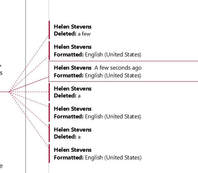 Track Changes: Language changes
Track Changes: Language changes There are a few things an editor can do to make it easier for a client to read a document when Track Changes have been used. First, it’s worth considering whether every change needs to be tracked. For example, will the author need to know that you’ve changed the proofing language? If you select all the text and change the language with Track Changes on, this will add a ‘Formatted: [language]’ mark-up every time you make any sort of correction to the text from then on (see left). So you may decide to make this a ‘silent’ change – one that’s made with Track Changes turned off.
Another correction that can usually be left untracked is changing double spaces (between words or sentences) to single spaces. The same goes for any unnecessary spaces that occur at the end of a line or paragraph, or within the cells of a table. Changes to the overall formatting – the font size, the line spacing, the paragraph style – are often best left untracked. If it’s important for the author to know that you’ve made any of these untracked changes, you can add a Comment at the start of the document or mention it in the covering email when you return the work.
When it comes to sending the edited document back to the client, there are various steps you can take to help with readability and clarity. I usually send two versions of the document:
When it comes to sending the edited document back to the client, there are various steps you can take to help with readability and clarity. I usually send two versions of the document:
- ‘Tracked’ – a version that shows all the changes that have been made, together with all the Comments
- ‘Final’ – a version with all the changes accepted, but with the Comments still showing.
If the client wants to look at all my amendments – apart from the ones I’ve made ‘silently’ – the Tracked document gives them the full picture. The client can go through the document line by line and accept or reject each change at the touch of a button. The points raised in the Comments can also be considered along the way.
Alternatively, if the client prefers to read the end result and is not overly concerned with each amendment, the Final version is available. The document can be read without the distraction of coloured lines and corrections, and the Comments are still visible, so any queries or explanations are there for the client to see.
Alternatively, if the client prefers to read the end result and is not overly concerned with each amendment, the Final version is available. The document can be read without the distraction of coloured lines and corrections, and the Comments are still visible, so any queries or explanations are there for the client to see.
Rather than peruse the Final version, the client could, of course, simply use the Tracked version and choose to view the document with ‘No Markup’ (one of the viewing options on the Tracking section of the Review tab). This would look the same as the Final version and would enable the client to quickly view, accept or reject the corrections by toggling from ‘No Markup’ to ‘Full Markup’.
But I’ve found that clients appreciate having the two different versions – one with changes showing and one with changes accepted – with the Comments visible on both. Track Changes is a useful feature, but there are so many options for how the mark-up appears (and which types of correction are visible) that it pays to keep things straightforward.
Something I heard on the radio recently made me think about how the language we use can signal a positive or negative approach to a particular topic.
Following a programme dealing with new advice on healthy lifestyles, the announcer said, ‘Well, the news seems to be full of doom and gloom about diet and exercise, but let’s find out whether the weather is any more cheerful.’
The announcer’s comments automatically cast the advice on diet and exercise in a negative light. She could have used positive language (‘Well, after that great advice on maintaining a healthy lifestyle, how’s the weather looking?’), or even left things fairly neutral (‘Well, lots to think about there. Now let’s look at what the weather has in store.’). But the suggestion was that maintaining a healthy lifestyle necessarily involves a level of suffering and privation, rather than being an active choice to follow healthier habits.
Now, I’m not saying it’s always easy to stay in an optimistic frame of mind – I do my fair share of grumbling and catastrophising! But when it comes to editorial freelancing, there are definitely ways of seeing the positive side of situations. Here are a few examples.
1. Running a business
To pick up the ‘healthy lifestyle’ theme, as freelancers we often need to take action to keep our businesses in a healthy condition. That sometimes means doing things outside our comfort zone – marketing and networking spring to mind here – or tackling tasks that seem boring or mundane, such as planning or accounts. Other activities might seem expensive or time-consuming (or both!): taking a training course, perhaps, or setting up a website.
But turning this around, running and growing a business can be seen as a challenge, with rewards – both personal and financial – for those who do it successfully. Rather than viewing marketing, networking, planning and training as chores, perhaps we should try to approach them with enthusiasm. After all, just as with diet and exercise, we have a great deal of flexibility in the choices we make and in the way we pursue them. And as with diet and exercise, optimism, imagination and the willingness to put in some effort will usually pay dividends.
2. Losing a client
All businesses have their ups and downs, and losing a regular client can feel like a devastating blow. Sometimes it’s out of our control, such as when an organisation takes the work in-house or overseas. Sometimes it’s a matter of money – the client is no longer able or willing to pay our rates – or a mismatch in expectations about scope of work or turnaround times. Whatever the cause, replacing the lost income is likely to be a priority, especially if the shortfall means a struggle to pay bills.
It can be a surprise to realise that losing a client can have a positive side. Sometimes it’s tempting to stick with one type of client, with a particular fee level, or with specific working arrangements. Losing a client can give us the opportunity to reassess our situation and ask some fundamental questions. Is it time for a change of direction? Are there new types of client, or new types of work, that we’d like to pursue? Could this be an opportunity to raise our rates? Depending on the circumstances of the loss, it might also be a chance to assess what went ‘wrong’ (if anything), and whether there are things we can do to protect ourselves against this in the future.
3. Lifestyle
Working as a freelance editor or proofreader has its own lifestyle challenges, and it’s important to take heed of the advice that’s available. Maintaining health and wellbeing involves – among other things – taking regular breaks from the screen, making an effort to get some fresh air and exercise, and thinking carefully about food and drink consumption.
Rather than see these as tedious ‘rules’ that have to be followed, we need to see them as an investment in our physical and mental health, and, hence, the health of our business. We can enjoy time away from the screen, whether we’re doing something else that’s useful or taking time out to relax. Laura Ripper has some excellent suggestions on her blog. Fresh air and exercise have obvious physical benefits, and they also offer a chance to think – or to switch off completely if that’s what’s needed. And our choice of food and drink can have an immediate effect on productivity – who can edit efficiently after a carb-heavy lunch?
4. A ‘can do’ attitude
Of course, it’s important to be clear – to ourselves as well as to our clients – about how much we’ll charge for a particular piece of work, and when we can complete it. And if a client’s demands seem unreasonable, or they simply can’t be accommodated, there’s nothing wrong with saying ‘no’ to a project.
But if the work looks interesting and there’s some flexibility in what can be done, we can sometimes present a positive alternative. We can discuss with the client what we can do within an agreed budget – for example, edit the language but not format the references. Similarly, clients are sometimes willing to wait until there’s a suitable gap in our schedule: rather than saying ‘No, I definitely can’t do it this week’, try saying ‘I could certainly fit this in next week. Would that work for you?’
5. Approaching our work
It’s worth thinking about the ethos of our editing and proofreading services. Is it helpful to tackle our work with a sense of superiority? Should we see ourselves as ‘Grammar Nazis’ who are driven by the desire to find mistakes in other people’s writing? It’s all too easy to become disillusioned when we’re editing and proofreading. Surely everyone should know how to use an apostrophe! And why, oh why do some people still put two spaces after every full stop?
It sometimes helps to think about things from the other side of the fence. An author has put in time and effort to produce a piece of writing (which is not an easy task), and it’s our job to make it the best it can be. Yes, it sometimes seems like an uphill struggle, and we might feel as though our work goes unnoticed. But we should feel confident in our skills and expertise, and take pride in our own contribution to whatever project we’re tackling. There’s a lot to be said for being an unsung hero!
Following a programme dealing with new advice on healthy lifestyles, the announcer said, ‘Well, the news seems to be full of doom and gloom about diet and exercise, but let’s find out whether the weather is any more cheerful.’
The announcer’s comments automatically cast the advice on diet and exercise in a negative light. She could have used positive language (‘Well, after that great advice on maintaining a healthy lifestyle, how’s the weather looking?’), or even left things fairly neutral (‘Well, lots to think about there. Now let’s look at what the weather has in store.’). But the suggestion was that maintaining a healthy lifestyle necessarily involves a level of suffering and privation, rather than being an active choice to follow healthier habits.
Now, I’m not saying it’s always easy to stay in an optimistic frame of mind – I do my fair share of grumbling and catastrophising! But when it comes to editorial freelancing, there are definitely ways of seeing the positive side of situations. Here are a few examples.
1. Running a business
To pick up the ‘healthy lifestyle’ theme, as freelancers we often need to take action to keep our businesses in a healthy condition. That sometimes means doing things outside our comfort zone – marketing and networking spring to mind here – or tackling tasks that seem boring or mundane, such as planning or accounts. Other activities might seem expensive or time-consuming (or both!): taking a training course, perhaps, or setting up a website.
But turning this around, running and growing a business can be seen as a challenge, with rewards – both personal and financial – for those who do it successfully. Rather than viewing marketing, networking, planning and training as chores, perhaps we should try to approach them with enthusiasm. After all, just as with diet and exercise, we have a great deal of flexibility in the choices we make and in the way we pursue them. And as with diet and exercise, optimism, imagination and the willingness to put in some effort will usually pay dividends.
2. Losing a client
All businesses have their ups and downs, and losing a regular client can feel like a devastating blow. Sometimes it’s out of our control, such as when an organisation takes the work in-house or overseas. Sometimes it’s a matter of money – the client is no longer able or willing to pay our rates – or a mismatch in expectations about scope of work or turnaround times. Whatever the cause, replacing the lost income is likely to be a priority, especially if the shortfall means a struggle to pay bills.
It can be a surprise to realise that losing a client can have a positive side. Sometimes it’s tempting to stick with one type of client, with a particular fee level, or with specific working arrangements. Losing a client can give us the opportunity to reassess our situation and ask some fundamental questions. Is it time for a change of direction? Are there new types of client, or new types of work, that we’d like to pursue? Could this be an opportunity to raise our rates? Depending on the circumstances of the loss, it might also be a chance to assess what went ‘wrong’ (if anything), and whether there are things we can do to protect ourselves against this in the future.
3. Lifestyle
Working as a freelance editor or proofreader has its own lifestyle challenges, and it’s important to take heed of the advice that’s available. Maintaining health and wellbeing involves – among other things – taking regular breaks from the screen, making an effort to get some fresh air and exercise, and thinking carefully about food and drink consumption.
Rather than see these as tedious ‘rules’ that have to be followed, we need to see them as an investment in our physical and mental health, and, hence, the health of our business. We can enjoy time away from the screen, whether we’re doing something else that’s useful or taking time out to relax. Laura Ripper has some excellent suggestions on her blog. Fresh air and exercise have obvious physical benefits, and they also offer a chance to think – or to switch off completely if that’s what’s needed. And our choice of food and drink can have an immediate effect on productivity – who can edit efficiently after a carb-heavy lunch?
4. A ‘can do’ attitude
Of course, it’s important to be clear – to ourselves as well as to our clients – about how much we’ll charge for a particular piece of work, and when we can complete it. And if a client’s demands seem unreasonable, or they simply can’t be accommodated, there’s nothing wrong with saying ‘no’ to a project.
But if the work looks interesting and there’s some flexibility in what can be done, we can sometimes present a positive alternative. We can discuss with the client what we can do within an agreed budget – for example, edit the language but not format the references. Similarly, clients are sometimes willing to wait until there’s a suitable gap in our schedule: rather than saying ‘No, I definitely can’t do it this week’, try saying ‘I could certainly fit this in next week. Would that work for you?’
5. Approaching our work
It’s worth thinking about the ethos of our editing and proofreading services. Is it helpful to tackle our work with a sense of superiority? Should we see ourselves as ‘Grammar Nazis’ who are driven by the desire to find mistakes in other people’s writing? It’s all too easy to become disillusioned when we’re editing and proofreading. Surely everyone should know how to use an apostrophe! And why, oh why do some people still put two spaces after every full stop?
It sometimes helps to think about things from the other side of the fence. An author has put in time and effort to produce a piece of writing (which is not an easy task), and it’s our job to make it the best it can be. Yes, it sometimes seems like an uphill struggle, and we might feel as though our work goes unnoticed. But we should feel confident in our skills and expertise, and take pride in our own contribution to whatever project we’re tackling. There’s a lot to be said for being an unsung hero!
As I say, I don’t see the world through rose-tinted spectacles, and I’m not suggesting that anyone else should, either. But I certainly think it’s worth considering both sides of any situation and trying to appreciate the benefits as well as the drawbacks. Freelance editing and proofreading can be a rocky path, so it’s essential to make the most of the positives (of which there are many!).
Seasonal gifts for editorial freelancers
24 December: Six FREE gifts for freelance editors and proofreaders
To paraphrase the Grinch (who, you’ll remember, tried to steal Christmas), not everything about Christmas comes from a store. Here are six things that freelance editors and proofreaders appreciate that don’t cost money.
1. Feedback (positive or negative)
It’s valuable to have feedback from a client on a job well done, or to have some suggestions for improvement. It only takes a few moments, but it can really help to make a freelancer feel that someone has actually noticed their work.
2. Thanks
Similarly, a quick ‘thank you’ from a client or a colleague acknowledges the effort that the freelancer has put in to meet a deadline, solve a problem, or give some helpful advice. Again, it doesn’t take long, but it’s sure to be appreciated.
3. Payment
Of course this costs money, but the speed at which an invoice is settled varies widely! Some clients go the extra mile to pay on time – or even before the required date – and that’s particularly pleasing for the freelancer.
4. Understanding
If freelancers are at home during the day, that’s probably because they’re working. Yes, freelancers might take a break to catch up with household chores, go shopping, or go out for lunch. But they really appreciate it when non-freelancing friends and family recognise that ‘being in the house’ doesn’t necessarily mean ‘being available for a chat’ or ‘being available…’ for anything else apart from work.
5. Support
Many freelancers work alone, so they value the support they receive from colleagues. Sometimes that’s face to face, for example at an SfEP local group, but nowadays it’s just as likely to be online. The SfEP forums and the various Facebook groups for editors all create a sense of camaraderie and offer a place to air problems, share experiences and seek help, 24/7!
6. Friendship
As often happens in traditional workplaces, freelancing can lead to long-lasting friendships. Editors and proofreaders who’ve met through local networking, the SfEP conference, or online groups or forums sometimes discover that they have a great deal in common over and above their professional interests. It’s a very supportive profession, with fellow freelancers seen as colleagues rather than competitors, and even clients can become friends!
So whether or not your seasonal gifts have a price tag, I hope you enjoy Christmas, and I wish you all the best for 2018.
1. Feedback (positive or negative)
It’s valuable to have feedback from a client on a job well done, or to have some suggestions for improvement. It only takes a few moments, but it can really help to make a freelancer feel that someone has actually noticed their work.
2. Thanks
Similarly, a quick ‘thank you’ from a client or a colleague acknowledges the effort that the freelancer has put in to meet a deadline, solve a problem, or give some helpful advice. Again, it doesn’t take long, but it’s sure to be appreciated.
3. Payment
Of course this costs money, but the speed at which an invoice is settled varies widely! Some clients go the extra mile to pay on time – or even before the required date – and that’s particularly pleasing for the freelancer.
4. Understanding
If freelancers are at home during the day, that’s probably because they’re working. Yes, freelancers might take a break to catch up with household chores, go shopping, or go out for lunch. But they really appreciate it when non-freelancing friends and family recognise that ‘being in the house’ doesn’t necessarily mean ‘being available for a chat’ or ‘being available…’ for anything else apart from work.
5. Support
Many freelancers work alone, so they value the support they receive from colleagues. Sometimes that’s face to face, for example at an SfEP local group, but nowadays it’s just as likely to be online. The SfEP forums and the various Facebook groups for editors all create a sense of camaraderie and offer a place to air problems, share experiences and seek help, 24/7!
6. Friendship
As often happens in traditional workplaces, freelancing can lead to long-lasting friendships. Editors and proofreaders who’ve met through local networking, the SfEP conference, or online groups or forums sometimes discover that they have a great deal in common over and above their professional interests. It’s a very supportive profession, with fellow freelancers seen as colleagues rather than competitors, and even clients can become friends!
So whether or not your seasonal gifts have a price tag, I hope you enjoy Christmas, and I wish you all the best for 2018.

Proverbs are a rich source of advice on daily life. Here are six sayings that will resonate with freelance editors and proofreaders.
1. You can’t make a silk purse from a sow’s ear
Editors and proofreaders might mutter this to themselves as they try to improve a piece of text that’s in a bad way. I’m not sure I agree with the sentiment, though. For a start, it’s not for me to judge that a piece of text is a ‘sow’s ear’. Writing isn’t an easy task, particularly if – as with some of my clients – English isn’t your first language.
Also, my view is that improving an author’s written work is what editors and proofreaders are being paid for. Even with limited time or a limited budget, there are almost always things we can do to make improvements. A ‘silk purse’ might not always be achievable, but we can usually manage to create something that’s more presentable than a ‘sow’s ear’.
2. Many hands make light work
Although editing and proofreading are often solitary activities, there are times when editorial professionals work together. For example, a couple of years ago I began subcontracting work to a trusted colleague, Laura Ripper, and I wrote about the experience on my blog. I’ve worked on other projects where the work has been shared between a group of editors in order to meet a tight deadline.
Communication is the key to success in these situations. Everyone needs to know what’s happening and what’s expected of them. Any issues need to be highlighted and communicated as soon as possible. And an up-to-date house style is worth its weight in gold.
3. Too many cooks spoil the broth
Many editors and proofreaders will have experienced this scenario, which is the opposite of the previous one. Perhaps several people working on the same project seem to be doing things in completely different ways. Or a document you’re working on has to incorporate the opinions of various different people who can’t seem to agree (‘editing by committee’). Or there are seven different versions of the same document in circulation.
In these situations, the whole job seems to take twice as long and the end result may be far from ideal. There’s a need for some clear ground rules, including a house style, agreed timescales, and effective version control!
4. More haste, less speed
As in all walks of life, the more you rush to finish a task, the less progress you will make. If you’re an editor or proofreader, this might mean missing errors that you should have spotted, failing to follow the brief properly, sending the wrong version of a file back to your client, or even sending the right file to the wrong client!
It’s important to be realistic when accepting work or negotiating deadlines, and to study the brief you’re given. Using checklists and house styles can also help. It’s worth making every effort to get things right first time. As another familiar saying goes, ‘A stitch in time saves nine’.
5. A change is as good as a rest
One of the things I enjoy about my work as a freelance editor and proofreader is the variety. I’d go so far as to say it’s the spice of life. Over the course of my freelance career I’ve worked on a whole range of material, from writing web copy and proofreading pet-food packaging to editing academic journal articles and high-profile reports for an EU agency.
It’s even better when I have more than one project on the go at the same time. I enjoy using different skills, reading about a variety of topics, and working on material in different formats. A change of task, pace and subject matter keeps me on my toes.
6. You can’t teach an old dog new tricks
Now this is one I’d definitely take issue with. It’s certainly the case that the older you get, the harder it is to learn new things. Also, the longer you’ve been doing a job, the greater the danger that you’ll become set in your ways. But our profession is constantly evolving, so as editors and proofreaders we need to keep up with changes in the industry, technological developments and potential new areas of work.
Fortunately, there are many different ways of doing this. Being part of a professional organisation such as the Chartered Institute of Editing and Proofreading (CIEP) is a great way to keep up to date with new ideas and technology. This is particularly important for freelancers, many of whom don’t have the same access to professional support, training and skills development as in-house editorial workers do.
Joining a professional organisation also offers the chance to develop valuable relationships with others in the field. Remember: birds of a feather flock together!
1. You can’t make a silk purse from a sow’s ear
Editors and proofreaders might mutter this to themselves as they try to improve a piece of text that’s in a bad way. I’m not sure I agree with the sentiment, though. For a start, it’s not for me to judge that a piece of text is a ‘sow’s ear’. Writing isn’t an easy task, particularly if – as with some of my clients – English isn’t your first language.
Also, my view is that improving an author’s written work is what editors and proofreaders are being paid for. Even with limited time or a limited budget, there are almost always things we can do to make improvements. A ‘silk purse’ might not always be achievable, but we can usually manage to create something that’s more presentable than a ‘sow’s ear’.
2. Many hands make light work
Although editing and proofreading are often solitary activities, there are times when editorial professionals work together. For example, a couple of years ago I began subcontracting work to a trusted colleague, Laura Ripper, and I wrote about the experience on my blog. I’ve worked on other projects where the work has been shared between a group of editors in order to meet a tight deadline.
Communication is the key to success in these situations. Everyone needs to know what’s happening and what’s expected of them. Any issues need to be highlighted and communicated as soon as possible. And an up-to-date house style is worth its weight in gold.
3. Too many cooks spoil the broth
Many editors and proofreaders will have experienced this scenario, which is the opposite of the previous one. Perhaps several people working on the same project seem to be doing things in completely different ways. Or a document you’re working on has to incorporate the opinions of various different people who can’t seem to agree (‘editing by committee’). Or there are seven different versions of the same document in circulation.
In these situations, the whole job seems to take twice as long and the end result may be far from ideal. There’s a need for some clear ground rules, including a house style, agreed timescales, and effective version control!
4. More haste, less speed
As in all walks of life, the more you rush to finish a task, the less progress you will make. If you’re an editor or proofreader, this might mean missing errors that you should have spotted, failing to follow the brief properly, sending the wrong version of a file back to your client, or even sending the right file to the wrong client!
It’s important to be realistic when accepting work or negotiating deadlines, and to study the brief you’re given. Using checklists and house styles can also help. It’s worth making every effort to get things right first time. As another familiar saying goes, ‘A stitch in time saves nine’.
5. A change is as good as a rest
One of the things I enjoy about my work as a freelance editor and proofreader is the variety. I’d go so far as to say it’s the spice of life. Over the course of my freelance career I’ve worked on a whole range of material, from writing web copy and proofreading pet-food packaging to editing academic journal articles and high-profile reports for an EU agency.
It’s even better when I have more than one project on the go at the same time. I enjoy using different skills, reading about a variety of topics, and working on material in different formats. A change of task, pace and subject matter keeps me on my toes.
6. You can’t teach an old dog new tricks
Now this is one I’d definitely take issue with. It’s certainly the case that the older you get, the harder it is to learn new things. Also, the longer you’ve been doing a job, the greater the danger that you’ll become set in your ways. But our profession is constantly evolving, so as editors and proofreaders we need to keep up with changes in the industry, technological developments and potential new areas of work.
Fortunately, there are many different ways of doing this. Being part of a professional organisation such as the Chartered Institute of Editing and Proofreading (CIEP) is a great way to keep up to date with new ideas and technology. This is particularly important for freelancers, many of whom don’t have the same access to professional support, training and skills development as in-house editorial workers do.
Joining a professional organisation also offers the chance to develop valuable relationships with others in the field. Remember: birds of a feather flock together!
Love it or hate it, Microsoft Word is difficult to avoid if you’re an editor, proofreader or writer. So it’s worth getting to grips with Word and familiarising yourself with its many features. This can save you time (which often means ‘save you money’), improve your accuracy, and – particularly when it comes to dealing with repetitive tasks and corrections – leave you free to focus on things that can’t be automated.
Even if you’ve been using Word for a while, you may not be familiar with all the tools I’ll mention. Don’t worry: you can still do a good job without them, but it’s worth exploring how each of them could help you. Each tool has its pros and cons, so do take the time to practise and get to know which tool works best for which task. Then, the next time you have a suitable job to do, you can dive straight in and put these tools to work!
Even if you’ve been using Word for a while, you may not be familiar with all the tools I’ll mention. Don’t worry: you can still do a good job without them, but it’s worth exploring how each of them could help you. Each tool has its pros and cons, so do take the time to practise and get to know which tool works best for which task. Then, the next time you have a suitable job to do, you can dive straight in and put these tools to work!
1. Find & Replace
This is useful when you want to replace one item – whether that’s a single character, a group of characters, a word, a phrase, or most other things – with another. You can refine your search using the ‘More’ button in the Find & Replace box. This will give you various options, such as ‘Match case’ and ‘Whole words only’, and various other choices under ‘Format’ and ‘Special’.
PROS
Find & Replace is fairly straightforward and intuitive. It allows you to click through and change items one by one, or ‘Replace all’ if you are sure you need to correct all instances in the document.
CONS
Beware of unintended consequences, particularly when using ‘Replace all’. The results can be amusing (e.g. changing ‘pants’ to ‘trousers’ results in ‘particitrousers’), but remember that mistakes take time to fix.
EXAMPLES
Changing one spelling to another (e.g. ‘favor’ to ‘favour’)
Removing unwanted spaces (e.g. change two spaces to one space after a full stop)
Italicise all instances of a word (using ‘Format’)
FIND OUT MORE
MS Office support, or Word’s in-built ‘Help’ function
Find & Replace is fairly straightforward and intuitive. It allows you to click through and change items one by one, or ‘Replace all’ if you are sure you need to correct all instances in the document.
CONS
Beware of unintended consequences, particularly when using ‘Replace all’. The results can be amusing (e.g. changing ‘pants’ to ‘trousers’ results in ‘particitrousers’), but remember that mistakes take time to fix.
EXAMPLES
Changing one spelling to another (e.g. ‘favor’ to ‘favour’)
Removing unwanted spaces (e.g. change two spaces to one space after a full stop)
Italicise all instances of a word (using ‘Format’)
FIND OUT MORE
MS Office support, or Word’s in-built ‘Help’ function
2. Wildcards
This feature of Find & Replace allows you to search for a pattern of characters (rather than a particular character, word or phrase) and make specific changes to it. For example, if you wanted to remove the full stop after Dr., Mr. and Mrs., you could use wildcards to find and replace each of these salutations with one that doesn’t include a full stop – something that wouldn’t be possible with a single Find & Replace action.
You need to choose the ‘Use wildcards’ option in the Find & Replace box and then use sets of symbols to define what you’re looking for. For example, [A-Z] will find any upper case letter, while b?t will find bat, bet, bit, bot and but – and, in fact, b5t, since the ‘?’ represents any character.
You need to choose the ‘Use wildcards’ option in the Find & Replace box and then use sets of symbols to define what you’re looking for. For example, [A-Z] will find any upper case letter, while b?t will find bat, bet, bit, bot and but – and, in fact, b5t, since the ‘?’ represents any character.
PROS
Wildcards are a very powerful tool. They are useful because they allow you to find patterns rather than exact strings of characters (as you do with the basic ‘Find & Replace’).
CONS
They can seem rather baffling at first glance! It takes time to develop the skill of defining terms correctly, so be prepared to practise. As with a normal Find & Replace, there can be unintended consequences.
EXAMPLES
Transposing names, dates, etc.
Inserting spaces between numbers and symbols
Formatting references
FIND OUT MORE
PC World article
WordMVP article
Jack Lyon’s Wildcard Cookbook (free to download from the Intelligent Editing website)
Wildcards are a very powerful tool. They are useful because they allow you to find patterns rather than exact strings of characters (as you do with the basic ‘Find & Replace’).
CONS
They can seem rather baffling at first glance! It takes time to develop the skill of defining terms correctly, so be prepared to practise. As with a normal Find & Replace, there can be unintended consequences.
EXAMPLES
Transposing names, dates, etc.
Inserting spaces between numbers and symbols
Formatting references
FIND OUT MORE
PC World article
WordMVP article
Jack Lyon’s Wildcard Cookbook (free to download from the Intelligent Editing website)
3. PerfectIt
This is an add-in for Word that you can purchase from Intelligent Editing. It’s a consistency checker that analyses your whole document, finds inconsistencies, and lists them so that you can choose whether or not to change each one. PerfectIt has a host of other features, including the facility to use wildcards as part of your tests. It has different style sheets that are available to users, and you can customise the tests to check for specific style issues. You can also share your own style sheets with other users.
–PROS
PerfectIt is easy to install and use, and it is immensely useful, even if you don’t take advantage of all its customisability. You’re always in control, as you decide which corrections to make and which to ignore. PerfectIt can be useful for analysing a document before you begin editing and for checking that you haven’t missed anything once you’ve finished. It’s customisable to your own or your client’s requirements.
CONS
You have to pay for it! It's available on an annual subscription, and there are hefty discounts for members of various organisations, including the Society for Editors and Proofreaders (SfEP). A previous drawback – that PerfectIt was only available for PC – has recently been partially rectified with the introduction of a cloud version, which can be used on a Mac.
EXAMPLES
Hyphenation
Variant spellings (ise/ize)
Capitalisation
List punctuation
Heading styles
Number styles
Abbreviations (are they all defined?)
FIND OUT MORE
Intelligent Editing website
PerfectIt is easy to install and use, and it is immensely useful, even if you don’t take advantage of all its customisability. You’re always in control, as you decide which corrections to make and which to ignore. PerfectIt can be useful for analysing a document before you begin editing and for checking that you haven’t missed anything once you’ve finished. It’s customisable to your own or your client’s requirements.
CONS
You have to pay for it! It's available on an annual subscription, and there are hefty discounts for members of various organisations, including the Society for Editors and Proofreaders (SfEP). A previous drawback – that PerfectIt was only available for PC – has recently been partially rectified with the introduction of a cloud version, which can be used on a Mac.
EXAMPLES
Hyphenation
Variant spellings (ise/ize)
Capitalisation
List punctuation
Heading styles
Number styles
Abbreviations (are they all defined?)
FIND OUT MORE
Intelligent Editing website
4. Macros
A macro is a series of commands that you run together to save time on repetitive tasks. Each macro performs a different function, or series of functions, and you install each one separately so that you have a menu to choose from. You can also assign keyboard shortcuts to each macro, which speeds things up even more.
Anyone can write their own macros, but there are plenty of ready-made ones available. UK editor Paul Beverley has produced a whole book of them, including instructions on how to install and use them, and this is free to download. He also has a useful YouTube channel.
Anyone can write their own macros, but there are plenty of ready-made ones available. UK editor Paul Beverley has produced a whole book of them, including instructions on how to install and use them, and this is free to download. He also has a useful YouTube channel.
PROS
Macros are powerful tools that can save literally hours of time on repetitive tasks. They’re free to write, install and use. Even ready-made macros can be customised, once you’re familiar with how they’re put together.
CONS
They may seem daunting at first, but once you’ve installed your first macro, the world is your oyster! Beware of unintended consequences (see above).
EXAMPLES
A couple of Paul Beverley’s ‘big’ macros:
FIND OUT MORE
Paul Beverley’s website
Paul’s YouTube channel
Macros are powerful tools that can save literally hours of time on repetitive tasks. They’re free to write, install and use. Even ready-made macros can be customised, once you’re familiar with how they’re put together.
CONS
They may seem daunting at first, but once you’ve installed your first macro, the world is your oyster! Beware of unintended consequences (see above).
EXAMPLES
A couple of Paul Beverley’s ‘big’ macros:
- FREdit: A Find & Replace macro that allows you to make a series of global changes, all at once, throughout the document.
- DocAlyse: Analyses a document and reports on various aspect of style, such as UK/US spellings, numbers written as figures, etc.
- ProperNounAlyse: Lists all capitalised words and the number of times they occur, helping you to spot spelling inconsistencies in the names of people, place and organisations.
- HyphenAlyse: Lists all terms that include a prefix, whether hyphenated, not hyphenated, or appearing as separate words.
- AAnAlyse: Finds possible errors in the use of ‘a’ and ‘an’.
FIND OUT MORE
Paul Beverley’s website
Paul’s YouTube channel
There are plenty of online resources to help you with these and other features of Microsoft Word. The Society for Editors and Proofreaders (SfEP) has an excellent course – Editing with Word – that covers these and many other aspects of the software.
Do spend some time getting to grips with these tools and exploring what Word can do. They can help you to achieve greater accuracy, consistency and speed in your editing and writing. What’s not to like?
Categories
All
Clients
Editing
Facebook
Freelancing
Literature
Microsoft Word
Mindset
Proofreading
School Reports
SfEP
Skills
Social Media
Travel
Writing
Yorkshire
Archives
December 2022
October 2022
November 2021
July 2021
March 2021
February 2021
June 2020
February 2020
October 2019
July 2019
June 2019
May 2019
February 2019
October 2018
July 2018
June 2018
April 2018
February 2018
January 2018
December 2017
November 2017
October 2017
May 2017
February 2017
January 2017
November 2016
October 2016
Read my Privacy policy
